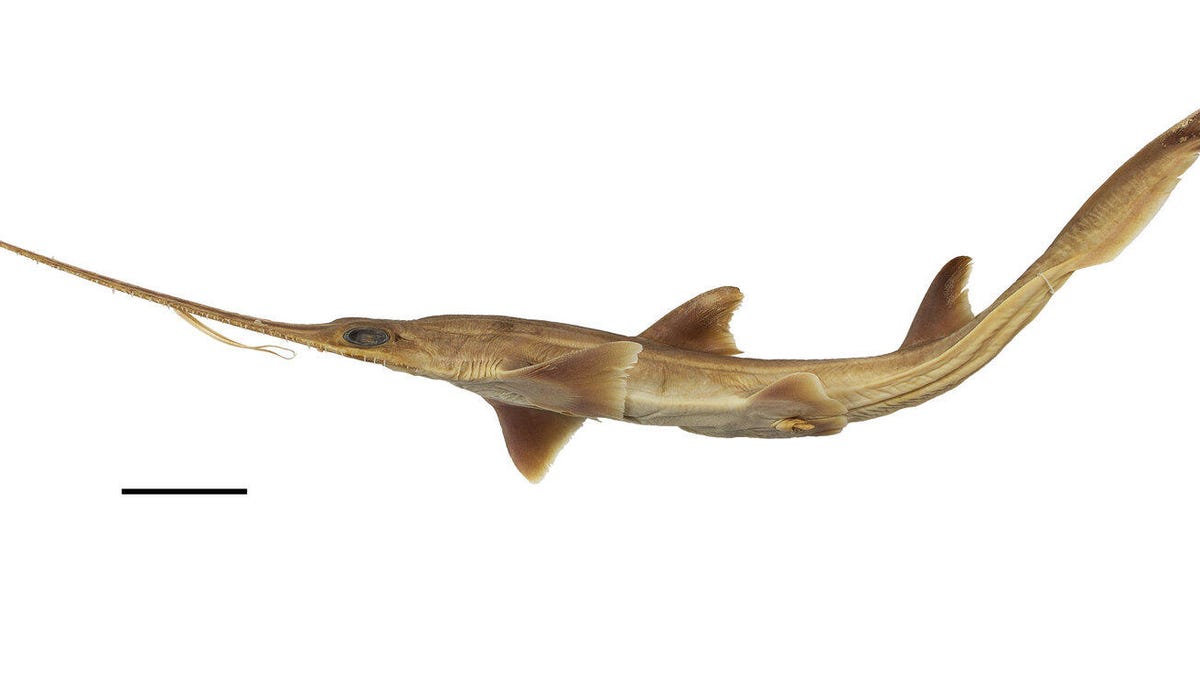Scientists discover two rare new sharks with saw-like snouts
A scientist called the find "simply astonishing."
If you like teeth, underwater predators, and strange things, then this news is for you: Shark fans can celebrate the discovery of two new rare species of six-gilled sawsharks found in the western Indian Ocean near Madagascar and Zanzibar.
Pliotrema kajae and Pliotrema annae are the two new species described in a paper published Wednesday in the journal PLOS ONE. These unusual sharks have six gill slits per side, as opposed to the five normally found in sawsharks. They get their cutting-tool name from their saw-like snouts.
These radiographs show, from top to bottom, P. kajae, P. annae and P. warreni sawsharks.
Researchers discovered the sharks both from recent sample collections in the wild and from studying specimens in museum collections.
Lead author and shark researcher Simon Weigmann with the Elasmobranch Research Laboratory in Germany described the dual discovery as "simply astonishing" in a Newcastle University release.
"Knowledge of sawsharks in the western Indian Ocean is generally still scarce. But considering their known depth distributions, both new species are likely affected by fishing operations," Weigmann said. The researchers are concerned that overfishing may be contributing to the decline and rarity of these sharks.
Sawsharks are fascinating creatures with a distinctive approach to tackling their meals. "Fast movement of the snout from side to side cuts the prey into fine pieces that can be swallowed easily," Newcastle said.
Prior to this discovery, there was only one known species of six-gilled sawshark, Pliotrema warreni. Radiographs of the sharks' heads show the differences between the three.
"The discovery re-enforces both how important the western Indian Ocean is in terms of shark and ray biodiversity, but also how much we still don't know," said Newcastle University's Andrew Temple, a co-author of the paper.


